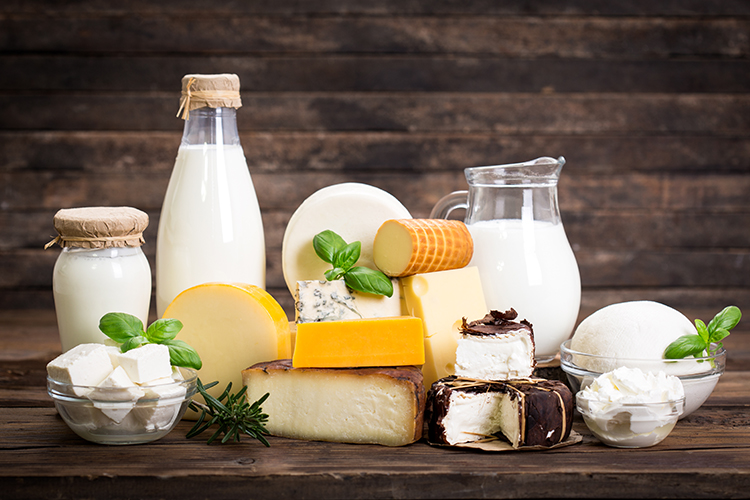SHARES

Lactose intolerance happens when your body is unable to digest lactose, a sugar present in milk. The cells in the small intestine produce enzyme lactase to break lactose down into glucose and galactose for energy. However, as high as 75% of the world’s population fail to digest lactose properly!
Lactose is a sugar found in breast milk and milk from most mammals. Lactose intolerance is rare among children below age 5, as most people are born with the ability to digest breast milk. As the child grows older, lactase production decreases, and eventually stops in adulthood, leading to lactose intolerance. Other conditions that can result in lactose intolerance include surgery or other gastrointestinal diseases.
Types of Lactose Intolerance
There are three types of the condition due to different underlying factors causing it.
-
Primary lactose intolerance
A sharp drop in lactase production during growing up years or adulthood makes milk products difficult to digest. It is common among African, Asian or Hispanic ethnicity. Also it is quite common among population of Mediterranean or Southern European descent.
-
Secondary lactose intolerance
When the small intestine suffers from injury, surgery, disease or bacteria overgrowth, the reduction or failure in producing lactase leads to secondary lactose intolerance. Treating the underlying disease may restore lactase production and ease the problem.
-
Congenital lactose intolerance
In rare cases, some babies are born with the inability to produce lactase due to a recessive variant genetic trait passed from generation to generation. Such trait appears only when both parents carry the same gene variant.
Common Symptoms
Sometimes, lactose intolerance can develop suddenly even if you never had it before with dairy products. The symptoms may vary over time. It can flare up, improve or disappear eventually. Usually, symptoms usually appear half an hour to two hours after consuming food with lactose.
Digestive symptoms happen when lactose moves through the gut undigested, including:
-
Stomach Cramps and Bloating
In people with the condition, lactose reaches the colon undigested. Lactose is fermented and broken down by microflora, which releases fatty acids and gasses. These by-products result in stomach pain and cramps around the navel and in the lower half of the stomach. Meanwhile, increased water content and gas in the colon stretch the gut wall, leading to bloating.
-
Diarrhoea
Diarrhoea is more common among babies and young children with lactose intolerance. Acids produced during fermentation and lactose encourage water to move into the colon, which increases the water content in the colon, leading to diarrhoea. Under normal circumstances, diarrhoea occurs only after drinking three to four cups of milk, assuming none of the lactose is digested before reaching the colon.
-
Increased Gas
Lactose fermentation increases the gas production of hydrogen, methane and carbon dioxide. In fact, people with lactose intolerance becomes so good at fermenting lactose that it increases flatulence. Interestingly, the gases produced from lactose fermentation have no odour.
-
Constipation
This condition happens when methane produced during lactose fermentation slows down the time taken for food to move through the gut. Nevertheless, constipation is not as common as diarrhoea among people with lactose intolerance.
I have lactose intolerance symptoms. What’s next?
First, consult a doctor to order a test for lactose intolerance, with the most popular option being the hydrogen breath test. Keeping a food diary to monitor food intake that causes discomforts can also be helpful.
If you have lactose intolerance, avoiding dairy products can prevent symptoms. Usually, one glass (240 ml) of milk is well-tolerated, especially if spread throughout the day. On the other hand, fermented milk products, such as cheese and yoghurt, seem to be better accepted among those with lactose intolerance.
People with lactose intolerance may be at risk of consuming less calcium. Be sure to consume enough calcium each day through other sources.
Good alternatives for calcium include:
- Fish with soft bones, such as canned salmon or sardines.
- Broccoli and other leafy vegetables.
- Almonds, nuts and dried beans.
- Foods added with calcium, such as cereals, fruit juices and soymilk.
Besides that, vitamin D helps in calcium absorption. Vitamin D can be obtained through food, including eggs, liver and salmon. Being in the sunlight also helps the body to make vitamin D.
Conclusion
Lactose intolerance is an inconvenient condition that causes gastrointestinal discomforts when you eat food containing lactose. Therefore, avoiding certain dairy products can help prevent symptoms of lactose intolerance. If you or your loved one experience symptoms with milk products, consult a doctor today.
Find a GP/Family Doctor in Malaysia, on GetDoc
Find a GP/Family Doctor in Singapore, on GetDoc
by Joanne Lee
Multipotentialite. Loves creating and seeing ideas come alive. View all articles by Joanne Lee.





